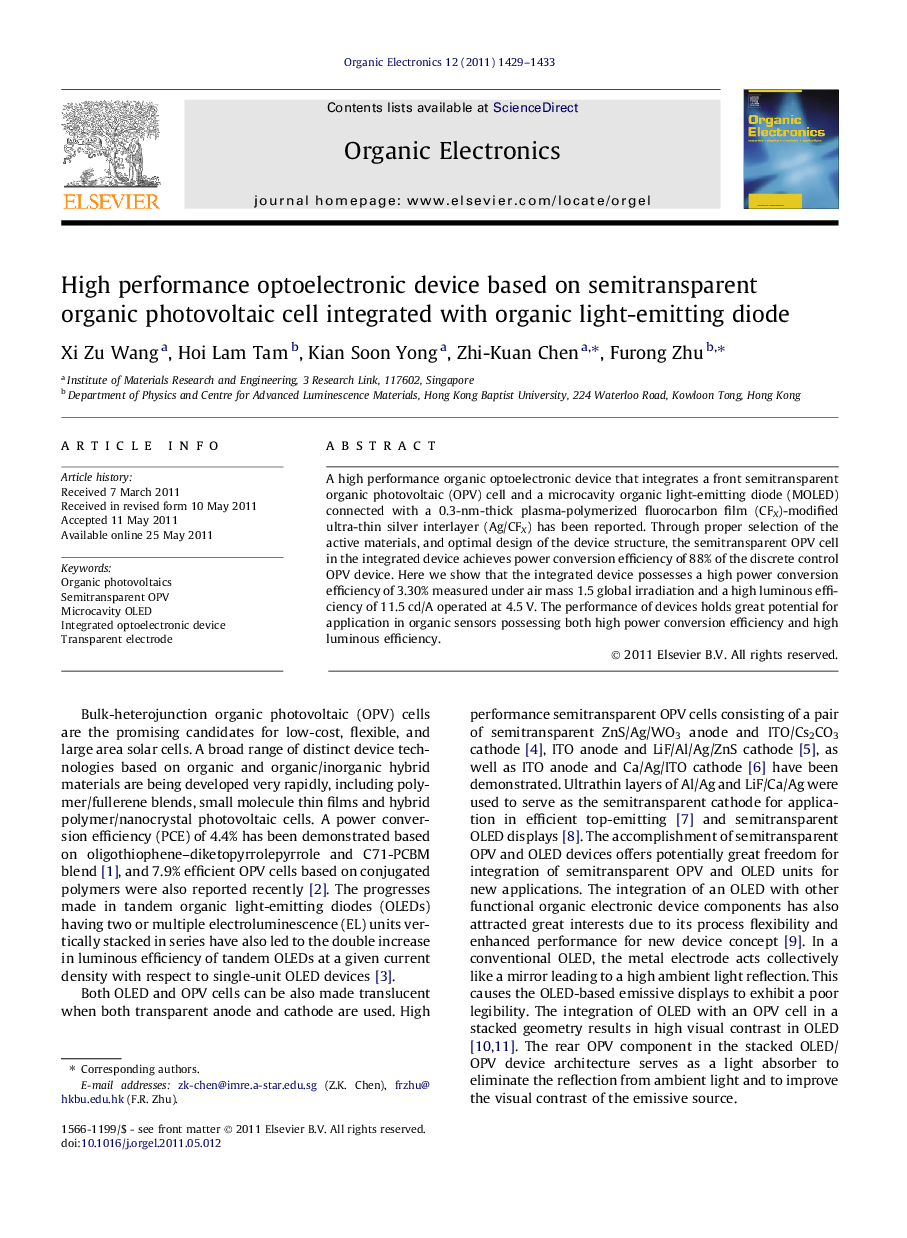| Article ID | Journal | Published Year | Pages | File Type |
|---|---|---|---|---|
| 1267674 | Organic Electronics | 2011 | 5 Pages |
A high performance organic optoelectronic device that integrates a front semitransparent organic photovoltaic (OPV) cell and a microcavity organic light-emitting diode (MOLED) connected with a 0.3-nm-thick plasma-polymerized fluorocarbon film (CFX)-modified ultra-thin silver interlayer (Ag/CFX) has been reported. Through proper selection of the active materials, and optimal design of the device structure, the semitransparent OPV cell in the integrated device achieves power conversion efficiency of 88% of the discrete control OPV device. Here we show that the integrated device possesses a high power conversion efficiency of 3.30% measured under air mass 1.5 global irradiation and a high luminous efficiency of 11.5 cd/A operated at 4.5 V. The performance of devices holds great potential for application in organic sensors possessing both high power conversion efficiency and high luminous efficiency.
Graphical abstractFigure optionsDownload full-size imageDownload as PowerPoint slideHighlights► A semitransparent OPV cell and an OLED are connected with a plasma-polymerized fluorocarbon film-modified ultra-thin silver interlayer ► The semitransparent OPV cell in the integrated device achieves a power conversion efficiency of 88% of the control OPV device. ► The integrated device possesses a power conversion efficiency of 3.3% and a luminous efficiency of 11.5 cd/A at 4.5 V.
